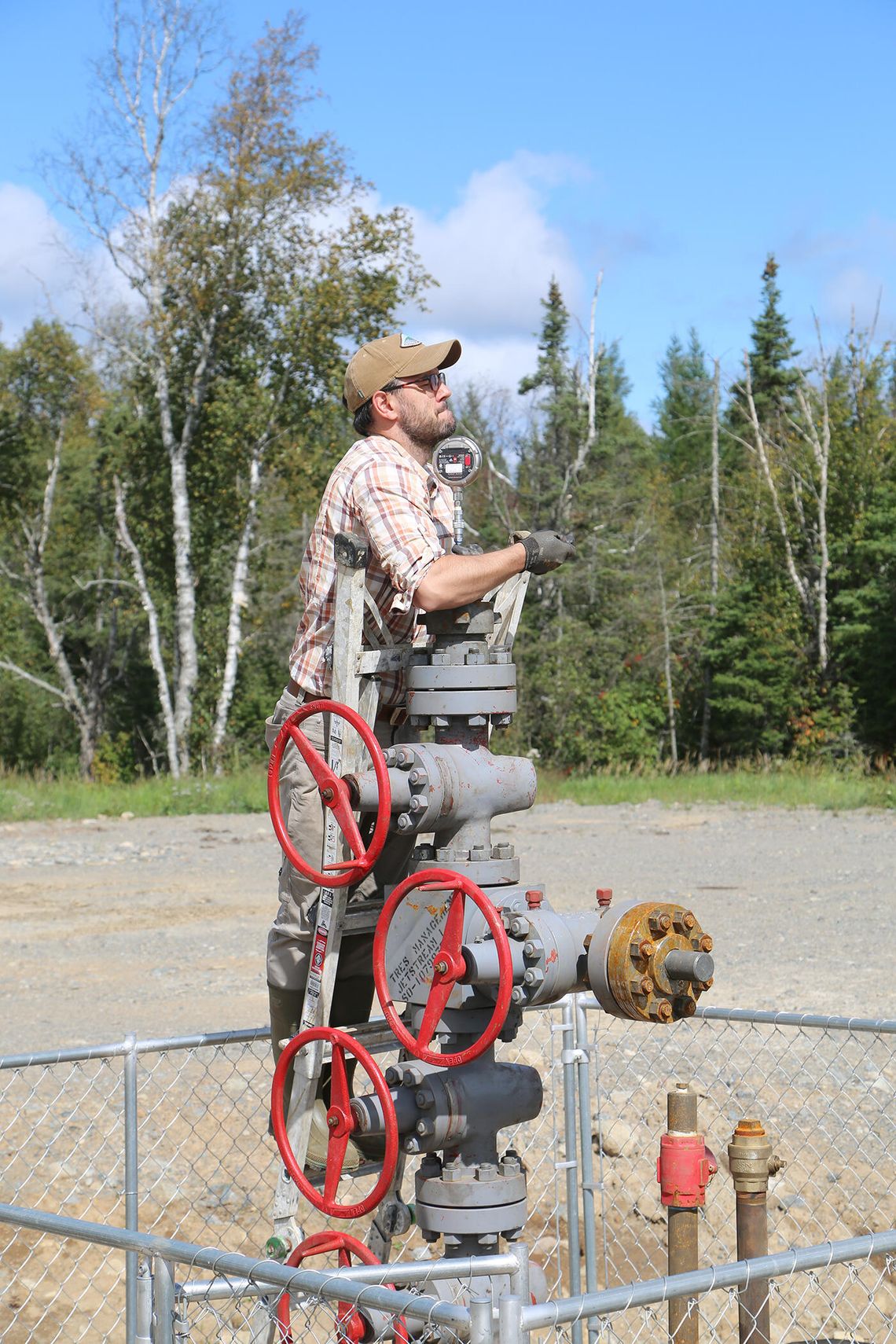Lawmakers paint bright future for helium extraction effort
Area lawmakers and the chief executive of Pulsar Helium struggled to contain their enthusiasm during a recent discussion about the company’s extraction efforts in northeastern Minnesota.
During a joint interview on a stock market trading website, talk turned to production as the end of 2025, a potential production facility in Two Harbors and spinoff possibilities including computer chip manufacturing in northeastern Minnesota.
“We know that this is the next frontier,” said State Sen. Grant Hauschild (D-Hermantown), during an interview with Zak Mir on Zaks Trader Cafe.
Hauschild and State Rep. Roger Skraba (R-Ely) joined Mir and Thomas Abraham-James, president and chief executive officer of Pulsar Helium.
Pulsar has captured the attention of regional officials with its discovery of vast helium deposits near Babbitt, and the prospect of new era of mining - and new jobs - in the region.
“Beyond any doubt this thing is real,” said Abraham- James.
Pulsar has received initial approval and permitting for exploration, which is continuing, and further work is planned through 2025 including what Abraham- James termed as “an all-important economic assessment as to how does this look for production.”
Given state approval, production could begin as soon as December of next year.
While the size and scope of production and what it will mean to the region’s economy remain to be seen, both area lawmakers voiced optimism about the potential.
“It’s kind of a boring site to go and see,” said Skraba. “You drive out to this spot and there’s a pipe coming out of the ground and that’s it, But it’s really clean, really green, but very exciting. I’m excited to see something like this in northeastern Minnesota. This is a huge positive.”
Pulsar Helium figures to play a role in green energy circles by providing a clean transition to wind turbines and solar power.
Skraba said legislators are “inviting them to develop a plant in Two Harbors, where there’s rail, shipping through the St. Lawrence Seaway, and a four-lane interstate highway right to the plant area.“ He added “if we can develop helium in Minnesota, perhaps with helium being close by we can get some computer chip manufacturing in northern Minnesota.”
Mir highlighted and made note of the cooperation Pulsar has received from the legislators and area officials.
Hauschild said it was a natural fit given the region’s history.
“We’ve had a long history of developing natural resources that have helped America be the premiere country in the world for production of natural resources,” said Hauschild. “There’s a long history of timber and taconite and hopefully in the future with copper-nickel.”
But there was no framework in place for regulations and royalty structures for helium extraction, prompting work this year to expedite the rule-making process and temporary rules for discovery and drilling for Pulsar.
Further legislation is anticipated in 2025, and Skraba said “we feel we’ve got synergy, people willing to work with us,” including from groups that typically oppose other mining efforts.
“I’m hoping I’m still here next year to finish legislation,” said Skraba, who is in the midst of a re-election campaign.
Hauschild described a bipartisan effort to advance Pulsar’s prospects.
“We know Pulsar is a great company and we are giving them a framework to help them do this,” said Hauschild. “I think that one thing that often goes unsaid is Representative Skraba and I are of different parties, but we represent the same region. It’s really special we were able to take this opportunity for our region, get past the partisanship and work together to get it done.” Abraham-James said he’s been thrilled with the cooperation and support from area leaders.
“It is very humbling and most welcome,” he said.
Pulsar’s intention is “to increase the size of the resource,” Abraham-James said, noting that Minnesota doesn’t have a history of natural gas and oil.
“I think the potential is really unknown at this point,” said Abraham-James.
Pulsar will “go down at least another 500 meters” and determine what may come next.
The interview included talk that the region might become “the Silicon Valley of helium.”
“It’s a very big deal for my district,” said Skraba. “It’s exciting in that it opens doors that were never open before. We could have chip production here. We could have e-waste recycling here.”
Hauschild offered similar sentiments.
“I think that it shows that northern Minnesota and the Iron Range area are really the gem of Minnesota,” said Hauschild. “We are the center of the universe when it comes to natural resources and how helium is being added to that and once again northern Minnesota is leading when it comes to providing materials that we need for everyday use.”











